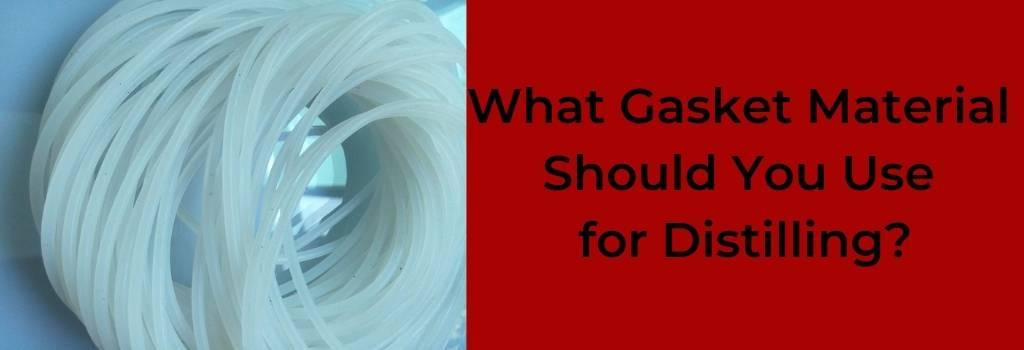What Gasket Material Should You Use for Distilling?

What constitutes the best gasket material seems to be a never-ending debate, in fact, we’ve discussed this twice already but there’s still a lot of ground to cover. In one of our previous articles, we did a comparison between silicone gaskets, EPDM gaskets, and PTFE gaskets. In that blog, we were very cautious about making claims and what we knew and didn’t know about the different gasket materials. Since then we’ve done some learning and actually come to some conclusions about the best gasket material (at least until more information comes out and makes us reevaluate our thoughts, again).
What Gasket Material Should You Use for Distilling?
One of our biggest hang-ups with making silicone a frontrunner is that we hadn’t seen much data about long-term leaching effects and reactions at high temperatures. A 2006 study by Guenu et al. showed that soaking silicon in a 95% ABV solution did actually release some small silicone molecules in their experiment. Most of these were released within the first four hours of exposure and in their trials with a 60% ABV, solutions showed no measurable release of silicon molecules compared to the control sample regardless of the exposure duration. This is in line with a 2016 study done by Crnich et al. that showed similar results after soaking silicone catheters for 10 weeks in a 70% ABV solution and found no structural changes to the silicone material. Both of these studies were done on materials that are designed to go into a human body during medical procedures and only showed potentially negative effects at extremely high ABV and those seemed to abate after 4 hours. It’s actually common medical practice to store silicone catheters in ethanol to ensure they stay sterile. Several studies have shown that silicone is safe for high-temperature applications in cooking so while no study specifically says that silicone doesn’t leach at a combination of high temperature and high ABV it isn’t much of a logical leap to assume it does not. As a safety measure against the worst-case scenario, it would be advisable to soak your gaskets in a 95% ABV solution for at least four hours if you think your process will get in the ballpark of those values.
While silicone is the clear winner for most distillery applications, EPDM is best for parts that see mechanical stresses, like the inside of a valve or any part you plan to disassemble very frequently. It is still a fine choice but because it lacks the flexibility of silicone and may not create as good a seal if the joints don’t line up perfectly it falls to the number two spot on the list. A strong second choice is still a second choice when it comes to the best gasket material so outside of these specific applications EPDM doesn’t beat silicone.
So there you have it, silicone beats EPDM in 99.9% of distilling applications. The only documented potential watch out is if you are making very high proof spirits and presoaking your gaskets provides a workaround. We recommend inspecting and changing your gaskets every year or two but remember, heat accelerates degradation so if you’re very worried about leaching into your product or degradation damage you may want to change your gaskets more regularly. If you have any questions about gaskets or other distilling equipment please give us a ring here at the office (561)-264-6919 or shoot an email to info@stilldragon.com and we’ll be happy to help you out! Cheers!